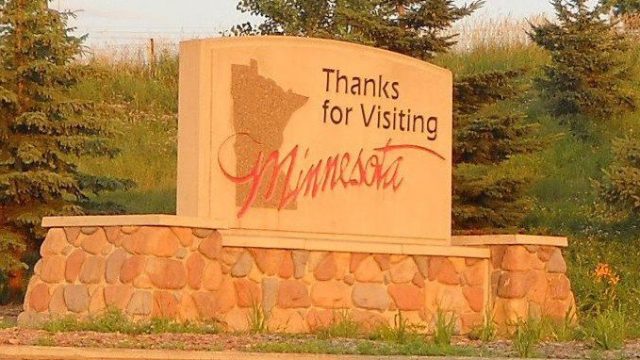Minnesota Is Losing Its Young People, And North Dakota Is Gaining Them

For a long time North Dakota had a serious problem with outmigration. Our young people were leaving the state to find opportunity elsewhere, very often in the Minneapolis/St. Paul area. The result was an aging, shrinking state population.
But in recent years that trend has reversed. Not only has North Dakota’s population been one, if not the, fastest growing in the nation but our state has been getting younger to boot. The trend from years past has been reversed, even to the point where North Dakota is now sucking young people out of Minnesota.
Though, to be fair, North Dakota isn’t the only state benefitting from Minnesota’s outmigration:
The state has lost residents every year since 2002, with young adults most eager to leave. About 9,300 18- to 24-year-olds move out annually, according to the Minnesota State Demographic Center.
That — combined with a declining birthrate and an aging population — has demographers and civic leaders sounding alarms.
“It’s a lapel-grabbing moment,” said Peter Frosch, a vice president at Greater MSP, a St. Paul nonprofit focused on economic development in the Twin Cities metro. …
Each year, 113,000 people leave Minnesota and go to another state, while about 101,000 move here from another state. Were it not for strong international migration, Minnesota’s overall population would be falling.
About a third of Minnesota’s “leavers” tend to move to the border states of Wisconsin (16 percent), North Dakota (12 percent) and Iowa (6 percent).
Count Brigitte Pobuda, 27, in that pack.
She grew up in Andover and studied interior design at the University of Wisconsin-Stout. But after a stint in Arizona, she settled with her boyfriend in Fargo, N.D. Rent is more affordable, she said, and there’s plenty of work. She’s laying down roots.
“I don’t mind thinking Fargo is forever,” she said.
Minnesota’s loss is North Dakota’s gain, but what could be driving people to leave that state for places like Wisconsin, North Dakota, and Iowa? Minnesota has the sort of progressive policies younger Americans are supposed to love. Minneapolis/St. Paul has a very active cultural scene. Heck, recently North Dakotans were told that we had to pass anti-discrimination protections for homosexuals or we would lose talented people to states like Minnesota which have those policies.
But that argument doesn’t seem to jibe with the facts.
In the aggregate, it’s Minnesota that is losing its young people to North Dakota, not the other way around.
So, again, what gives?
Maybe the problem is Minnesota’s taxes. Those progressive policies aren’t cheap, and according to the Tax Foundation Minnesota’s per-capita tax burden is $4,858 per person, the 6th highest in the nation. North Dakota comes in at 36 on that list. Iowa is at 29 and South Dakota, another popular destination for Minnesota outmigration, is at 48.
Another problem could be labor policies. Minnesota is not a right-to-work state, meaning that workers there can be forced to join labor unions against their will, but Minnesota’s neighbors – Iowa, Wisconsin, and the Dakotas – are all right-to-work states.
That matters. “According to data from the Bureau of Labor Statistics, from 2003-13 states with such laws increased their employment rolls by 9.5%—nearly three percentage points more than the national average and more than double the growth in non-right-to-work states,” reported the Wall Street Journal last month. “These weren’t average jobs, either. They were good-paying positions with increasing wages. Personal incomes in those states grew 12% more than in states without right-to-work protections during that same 10-year period, according to a 2014 study by the American Legislative Exchange Council.”
I don’t think Minnesota raising its minimum wage has helped either. A higher minimum wage basically means inflating the cost of employing low-skill, entry-level workers. That includes a lot of young people.
“This move by Minnesota again proves that the leadership in Minnesota looks at business as something to tax and regulate, where as in North Dakota we see business as something that is encouraged in our state, and is the life blood to our economy and our citizens prosperity,” Jon Godfread of the North Dakota Chamber of Commerce said of Minnesota’s minimum wage hike back in a year ago.“I think in terms of businesses it shows another reason to relocate to North Dakota.”
That’s clearly the case. Above all else, young people crave opportunity. Thanks to Minnesota’s politics, less of that exists there than elsewhere.




